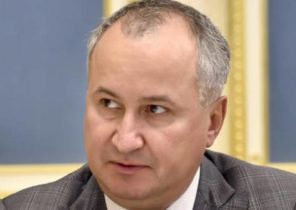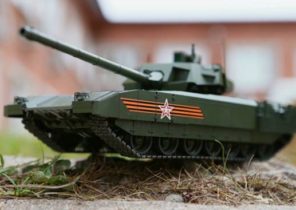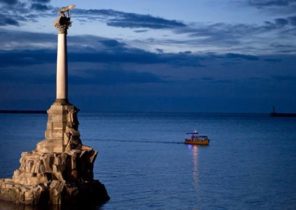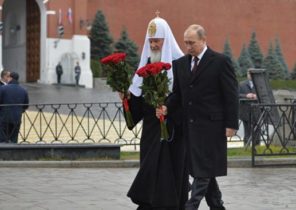
Getting Finland’s independence had an impact on the lives of ordinary Finns almost immediately and to a much greater extent than expected.
In the first years after the receipt of Finland’s independence even more than its manifestations in real life you could see in the village and not in town.
“The destruction of the Institute of torpasta (class of farmers, who had no property — approx.ed.) existed since the seventeenth century, made a revolution to the greatest extent in southern and Western Finland. Landless people received land, when with the entry into force of the law of the Lex Kallio of 1922 made possible the purchase of land. From this time begins the story of small farmers,” says a Professor at the University of Helsinki Palma the pan (Panu Pulma), which deals with the history of Finland and the Nordic countries.
“From this environment subsequently formed the backbone of the party “Agrarian Union”. Earlier Tobari the majority supported the social Democrats, but as the owners of the land, many people have changed camp. This had a serious impact on the entire political life of Finland”.
High customs duties
According to Pulma, on rural development in a decisive way influenced the emergence of an independent agricultural policy.
“A significant part of agricultural policy was the customs policy, which supported exports, but have established large customs import taxes. So strengthen the position of domestic agriculture”.
“The population of Eastern Finland independence brought unexpected restrictions, because the open before the border with Russia, particularly St. Petersburg, was now closed.”
“Before the First world war borders of Europe had no special significance in the movement of ordinary citizens, but suddenly it all changed, in a neighboring country, you can’t just go shopping or to sell their products.”
In the first years after independence, both in the city and in the countryside of Finland lived a hard life. The wounds of civil war are not yet healed, and the situation worsened swept the country in 1918-1919 epidemic of the Spanish flu, which claimed the lives of 25 thousand Finns. Another terrible disease that time was typhoid fever.
“In the first years of independence, Finland experienced a terrible famine. Workers did not have enough food, money could buy very little. The next decade was already more peaceful and prosperous”.
“The changing structure of livelihoods — in particular, reducing the number of places where was traditionally used a laborers, led to the fact that people were forced to go in search of work in the city. At the same time, this has led to the equalization of social relations in the village,” says Palma.
“In the cities, the rural population faced with modern life, which was attended by machines, literature, pop music and cinema. In the 1920-ies it was mainly focused on enrichment of the most prosperous part of the population, but gradually money became less.”
Illicit distilling and smuggling
The independence of Finland gave the possibility of introducing prohibition. The law entered into force in 1919. A political front demanded the introduction of the law on complete sobriety in the late XIX century, but the Emperor did not agree to this.
“Did prohibition lead to bootlegging in the villages and initiated the development of smuggling and related organized crime”.
“Other products that are enjoyable, such as coffee and scones to coffee have become very popular among smallholders and of the working population of the cities. Coffee was a kind of indicator of living standards and the working families gave him for Breakfast, even the children.”
Chuckanucka organization promoted sports
In independent Finland the morning definitely started with sports. His popularity has grown greatly among the General population in 1912, when Kolehmainen Hannes (Hannes Kolehmainen) won gold in Stockholm.
“In the village sports developed chuckanucka organization, with the light hand member of Tahko Pihkala (Tahko Pihkala) the game of baseball spread throughout the country,” says Palma.
“The enthusiasm with which chuckanucka units were called to the sport, can be explained by two reasons. The first was, of course, maintain good athletic state, the second reason was an attempt to do something that would lead to confusion Russian authorities. Before independence, no sports, no scouting, no other organizations were not available to the common people.”
Largely due to sports and other activities in various organizations in all sectors of society in independent Finland spread a unifying symbols and flags, and began to mark national holidays and to sing the national anthem.
“The symbolic significance of its own flag was huge. He made people to understand that we do one thing and are in the same boat. Don’t know what would have happened if people found out that blue and white was originally the colors of the Russian fleet,” grins Palma.
“A significant role in the rise of national consciousness was played by the emergence of a universal compulsory education system of public schools and private agencies of security such as police and military service”.
One of the phenomena of the years immediately following independence, the so-called “Russian brides”, that is, the Finnish women, who before independence had met with the Russian soldiers. According to Professor of Poly, they are considered traitors, as well as women, who during the civil war were on the red side.
“The first few years after independence, mistakenly attribute to speculators, who were called “goulash”. But these wealthy on the deficit of the goods, the people have nothing to do with the concept of independence, their gold was in 1910-e years of the First world war,” explains Palma.







